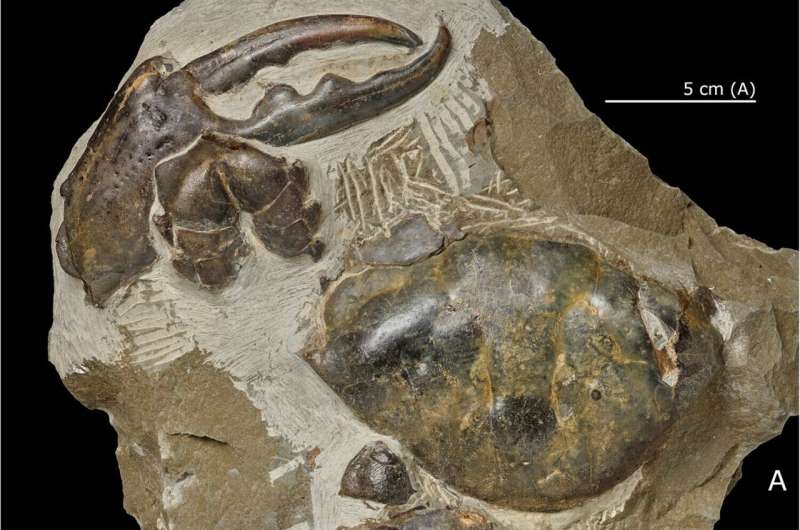March 5, 2024 report
This article has been reviewed according to Science X's editorial process and policies. Editors have highlighted the following attributes while ensuring the content's credibility:
fact-checked
trusted source
proofread
Fossil unearthed in New Zealand contains the largest fossil crab claw ever found

A pair of researchers, one a paleoecologist with Utrecht University, the other an independent ancient crab enthusiast, have identified the largest known crab fossil claw ever discovered. In their paper published in the journal New Zealand Journal of Geology and Geophysics, Barry W. M. van Bakel and Àlex Ossó describe the features of the claw and where the crab that once owned it fits in its family tree.
The claw was found by amateur enthusiast Karl Raubenheimers in 2008. It was embedded in a rock he found on a beach in North Taranaki, New Zealand. After noting that the claw was a fossil and that it was very large, he contacted van Bakel, who several years later worked with Ossó to study and identify the claw.
Testing of the claw and other material in the rock showed it to be from approximately 8.8 million years ago. It was extremely large, and while it cannot yet be measured accurately due to it being embedded in a rock, the researchers suggest it is the largest fossil crab claw ever found. It also represents a new species, which the researchers named Pseudocarcinus karlraubenheimeri.
The research pair notes that many fossil crab claws have been found in the area; the beach where it was found is in the Miocene Urenui Formation of the Taranaki Basin. Prior research has shown that the nearby Mohakatino Volcanic Center erupted 8.8 million years ago, covering a host of creatures in sediment, mud, and volcanic ash, a mix that allowed for excellent preservation.
The researchers also found that P. karlraubenheimeri belongs to the genus Pseudocarcinus genus, which includes a type of modern crab known as the giant deepwater crab. The researchers note the modern crab is approximately twice the size of the newly identified fossil crab. Such crabs tend to have differently sized claws; one is typically much larger than the other.
The researchers note that crabs in the area have tended to grow larger over time due to threats from rivals or predators—also, a larger claw would have also been useful in obtaining food such as gastropods and bivalves.
More information: Barry W. M. van Bakel et al, A new 'Southern Giant Crab' from a miocene continental slope palaeoenvironment at Taranaki, North Island, New Zealand, New Zealand Journal of Geology and Geophysics (2024). DOI: 10.1080/00288306.2024.2314472
© 2024 Science X Network





















